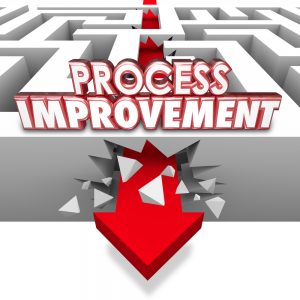One way to ease the impact of uncertainty and volatility is for integrators to build resilience into their processes.
 While developing personal and team adaptability, integrators should also examine how their processes either build or drain resilience.
While developing personal and team adaptability, integrators should also examine how their processes either build or drain resilience.
Consider this advice.
Integrators have experienced some incredible flexibility, adaptability, and downright heroism since the beginning of the pandemic. Today, as the pressure on technology teams persists, many have turned their attention to identifying and preventing burnout on their teams.
Now, integrators are learning how to toe the line between building strength within their teams and demanding too much change of their organizations.
One way to ease the impact of uncertainty and volatility is for integrators to build more resilience into processes.
The past two years have shown us how quickly our normal can change. And we’re still dealing with things that will challenge our processes for some time into the future including supply chain and labor shortages. Integrators will need to focus attention on what matters most to their organizations, in addition to changes that will give organizations the most opportunity to flex if needed.
People are only as good as the processes they are a part of.
As Edward Deming said, “A bad system will beat a good person every time.”
8 ways to build resilience into processes
It takes a systemic approach to build processes that are sustainable.
The key is to take an emotionally intelligent approach in building processes that are both efficient and effective. There are a number of other actions integrators can take to ensure that their processes are also there to guide people through times of significant change.
-
Measure how your team feels about existing processes
Tech leaders must build in human feedback loops, then respond when given actionable feedback.
You will get some great ideas to improve outcomes, while strengthening trust and communication.
One way to do this is to conduct post-project reviews to discover how attitudes and feelings changed over the course of a particular project. Ask how people feel about a project or process on a 0 to 10 scale, for example. Anticipate overenthusiastic responses, but also push further and ask how the situation could be improved.
-
Root out bottlenecks
Bottlenecks drain the bandwidth of the person who is the bottleneck and frustrate others who are slowed down.
Look for potential single point-of-contact failures and overloads during your integration projects.
-
Adopt known best practices
The past two years have shown us the importance of robust, nimble, and resilient processes and IT systems that can both withstand sudden change and adapt to many concurrent modes of operation.
-
Be agile
Working in an agile fashion is, by design, a more flexible way to accommodate the unexpected. It is also important to celebrate small wins and progress.
Contrary to conventional wisdom, when initiating a behavior change that challenges team members, it is more effective to shrink the size of the change by celebrating small wins rather than setting a high bar. Planning work in sprints creates a natural cadence for this.
-
Build systems and structures that reinforce desired outcomes
One of the key roles of a leader is to cultivate the emotional climate necessary for a given task. The goal should be to match the emotional tone to the requirements of a certain process or desired outcome.
When building out processes, consider how different emotions can facilitate different kinds of problem solving. Effective technology leaders should create a climate where people experience pleasant emotions, but here are times when other emotions can be more effective.
Feelings of contentment, for example, can be good facilitators for reaching agreement, while happiness can fuel creative planning.
On the other hand, a certain amount of anxiety can motivate employees or foster critical analysis.
It’s important to match the emotional tone to the process – within reason. Remember that leaders who create more pleasant cultures are likely to have teams which are more productive and which retain top talent.
-
Create clear decision-making routes – and avoid backtracking
Second guessing and rethinking are resilience killers.
Rare cases may need to be revisited, but typically you can avoid falling into this trap by documenting a clear path for decision making. This should include how and when decisions should be escalated to the next level of decision makers.
When you have a clear process, the right people at the table from the start, and a solid rationale for the decision, you will seldom need to spend time and resources on revisiting decisions.
-
Educate and prepare the workforce for more resilient processes
In building resilient, future-proof organizations, tech leaders should think equally about:
- the stability of their technical ecosystems,
- the flexibility of their processes, and
- the preparedness of their people.
Processes, after all, are performed by people.
Without designing and planning initiatives with end users in mind, you’re bound to create gaps and weaknesses in the your new solution. Just as a small vulnerability in an IT security can break a whole system. And confusion or resistance amongst your people can threaten the durability of your new processes.
-
Build boundaries into processes
Plan for hard stops during black out periods and cut off dates. Period.
Everyone needs downtime. So, it is critical to formalize the protection of your team’s energy.
This article, by Stephanie Overby, first appeared on The Enterpriser’s Project, and has been shared under the CC-BY-SA license.
Read the original story here – Change Management: How to Build Resilience Into Your Processes
Handpicked Related Content
-
What is the purpose of your processes? And does everyone understand the value? If an integrator is engaging in an activity on a daily basis, people need to know why. Everyone should understand why processes are in place. Mature companies…
-
Hank Aaron followed a process during every at-bat This is a guest blog post, by Chris Peterson, Principal at Vector Firm Hank Aaron was one of the greatest baseball players of all time. He holds the all-time record for…
-
When was the last time your integration business focused on process improvement? Process management is an exercise in efficiency – it is all about doing the correct things while minimizing waste. There are a lot of programs out there that address…




